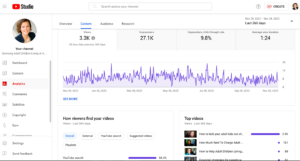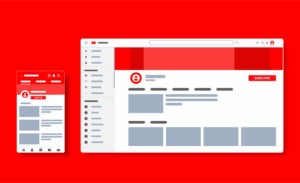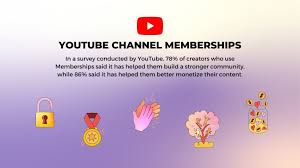Web Accessibility Unleashed: Designing Inclusive and User-Friendly Websites for All

In the expansive realm of web development, the ethos of inclusivity and user-friendliness takes center stage. The concept of web accessibility goes beyond mere design; it’s a commitment to ensuring that digital experiences are inclusive and cater to a diverse audience. This comprehensive guide delves into the principles, practices, and tools that empower developers and designers to unleash the full potential of web accessibility. From understanding the needs of users with disabilities to implementing inclusive design strategies, this journey aims to transform the digital landscape into a space that welcomes and accommodates everyone.
II. The Imperative of Web Accessibility
A. Understanding Disabilities
- Diverse User Needs:
- Description: Delve into the various types of disabilities and the diverse needs of users. From visual and auditory impairments to motor and cognitive challenges, gaining insights into different disabilities lays the foundation for creating truly accessible websites.
- The Impact of Inaccessibility:
- Description: Explore the real-world impact of inaccessible websites on users with disabilities. Understand the barriers they face and how inaccessible design hampers their ability to access information, engage with content, and participate in the digital sphere.
B. Legal and Ethical Considerations
- Accessibility Laws and Standards:
- Description: Navigate the legal landscape surrounding web accessibility. Explore global standards such as the Web Content Accessibility Guidelines (WCAG) and understand the legal obligations that businesses and developers must adhere to.
- Ethical Imperatives:
- Description: Delve into the ethical considerations of web accessibility. Uncover the moral responsibility that developers and designers bear in ensuring that digital experiences are inclusive, equitable, and respectful of all users.
III. The Foundations of Inclusive Design
A. User-Centric Design Principles
- User-Centered Design:
- Description: Embrace user-centered design principles that prioritize the needs and experiences of diverse users. Understand the importance of empathy, user personas, and iterative design processes in creating inclusive digital interfaces.
- Progressive Enhancement:
- Description: Explore the concept of progressive enhancement. Learn how starting with a basic, accessible foundation and then layering on additional enhancements ensures that the user experience remains inclusive and functional for all.
IV. Practical Guidelines for Web Accessibility
A. Creating Accessible Content
- Semantic HTML:
- Description: Dive into the world of semantic HTML. Understand how proper HTML markup enhances accessibility by providing structure and context, facilitating a more meaningful experience for users of assistive technologies.
- Accessible Forms:
- Description: Explore best practices for creating accessible forms. From proper labeling and input elements to error handling, discover how well-designed forms cater to users with various disabilities.
B. Navigating the Visual Landscape
- Contrast and Color Accessibility:
- Description: Understand the significance of contrast and color accessibility. Explore techniques for ensuring text readability, differentiating elements, and creating interfaces that accommodate users with visual impairments.
- Responsive Design for All:
- Description: Embrace responsive design principles that cater to users across different devices and abilities. Learn how flexible layouts, scalable images, and fluid grids contribute to a seamless experience for all users.
C. Multimedia and Interactive Elements
- Accessible Images and Multimedia:
- Description: Uncover the importance of accessible images and multimedia content. Explore alternative text, captions, and other strategies that enhance the experience for users who rely on screen readers or other assistive technologies.
- Keyboard Accessibility:
- Description: Dive into keyboard accessibility as a fundamental aspect of web design. Understand the challenges faced by users with motor impairments and explore techniques for ensuring that all interactive elements are navigable via keyboard inputs.
V. Assistive Technologies and User Testing
A. Technologies That Empower
- Screen Readers and Beyond:
- Description: Explore the landscape of assistive technologies, with a focus on screen readers, magnifiers, voice recognition, and more. Understand how these tools empower users with disabilities to navigate and engage with digital content.
- The Role of ARIA:
- Description: Delve into Accessible Rich Internet Applications (ARIA) and its role in enhancing accessibility. Learn how ARIA attributes bridge the gap for dynamic content and interactive elements, providing additional information to assistive technologies.
B. Conducting Inclusive User Testing
- Inclusive Testing Strategies:
- Description: Implement inclusive user testing strategies. Understand the importance of involving users with disabilities in the testing process and learn how to gather meaningful feedback to improve accessibility.
- Automated Testing Tools:
- Description: Explore automated testing tools that aid in identifying accessibility issues. From browser extensions to online validators, leverage these tools to perform initial assessments and streamline the testing process.
VI. Advanced Topics in Web Accessibility
A. Web Accessibility in Modern Technologies
- Single Page Applications (SPAs):
- Description: Address the challenges and solutions for web accessibility in Single Page Applications (SPAs). Understand how the dynamic nature of SPAs impacts users with disabilities and explore strategies for ensuring inclusivity.
- Web Accessibility in Mobile Apps:
- Description: Extend the principles of web accessibility to mobile applications. Discover how mobile platforms introduce unique challenges and opportunities for creating inclusive digital experiences.
B. Emerging Trends and Technologies
- AI and Accessibility:
- Description: Explore the intersection of artificial intelligence (AI) and web accessibility. Understand how AI technologies can be harnessed to enhance accessibility and address the evolving needs of users with disabilities.
- Virtual and Augmented Reality Accessibility:
- Description: Peer into the future of accessibility with virtual and augmented reality. Examine the challenges posed by these immersive technologies and explore potential solutions to make virtual experiences accessible to all.
VII. Implementing Accessibility in Development Workflows
A. Inclusive Design in Agile Environments
- Accessibility in Agile Development:
- Description: Integrate accessibility seamlessly into Agile development workflows. Explore strategies for incorporating accessibility considerations in sprints, conducting regular audits, and fostering a culture of inclusivity within development teams.
- Collaboration Across Disciplines:
- Description: Emphasize collaboration across disciplines for effective accessibility implementation. Understand the role of designers, developers, content creators, and quality assurance teams in collectively ensuring a fully accessible digital product.
VIII. Real-World Case Studies
A. Success Stories in Web Accessibility
- Leading the Way: Industry Pioneers:
- Description: Explore real-world success stories of industry pioneers leading the way in web accessibility. Discover organizations and projects that have prioritized inclusivity and achieved remarkable results.
- Inclusive Design Awards:
- Description: Celebrate inclusive design achievements with a spotlight on projects and initiatives that have received recognition for their outstanding commitment to accessibility.
IX. The Future of Web Accessibility
A. Evolving Standards and Practices
- Next-Generation Accessibility Standards:
- Description: Peer into the future of accessibility standards. Explore emerging standards and practices that aim to raise the bar for web accessibility, ensuring that digital experiences continually evolve to meet the needs of all users.
- Global Initiatives for Inclusivity:
- Description: Delve into global initiatives driving inclusivity. Explore collaborations, partnerships, and movements that champion the cause of web accessibility on a global scale, fostering a digital landscape that leaves no user behind.
X. Conclusion
Web accessibility isn’t merely a checkbox on a development checklist; it’s a commitment to building a digital world where everyone can participate, contribute, and thrive. As developers and designers, the responsibility lies in our hands to craft experiences that transcend barriers and empower users of all abilities. The journey towards designing inclusive and user-friendly websites is an ongoing pursuit, and this guide serves as a compass, navigating through the principles, practices, and innovations that define the ever-evolving landscape of web accessibility. Unleash the power of inclusive design, embrace the diversity of your audience, and embark on a transformative journey to make the web accessible for all. The future of the internet is one where everyone has a seat at the digital table, and it begins with the choices we make today.







